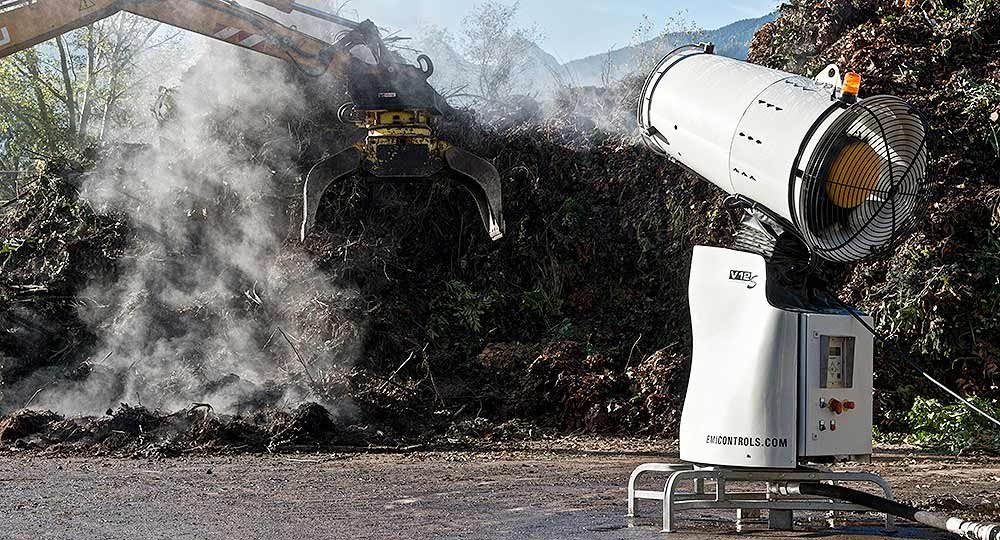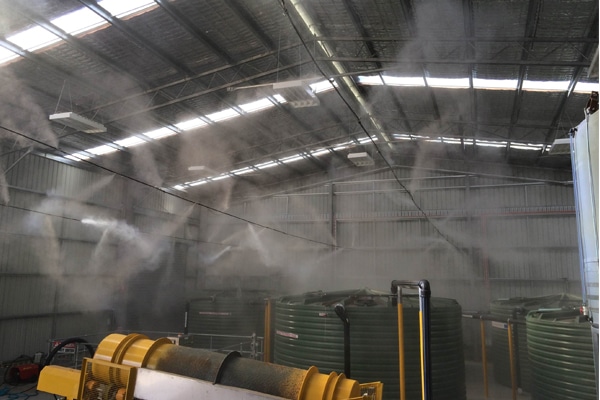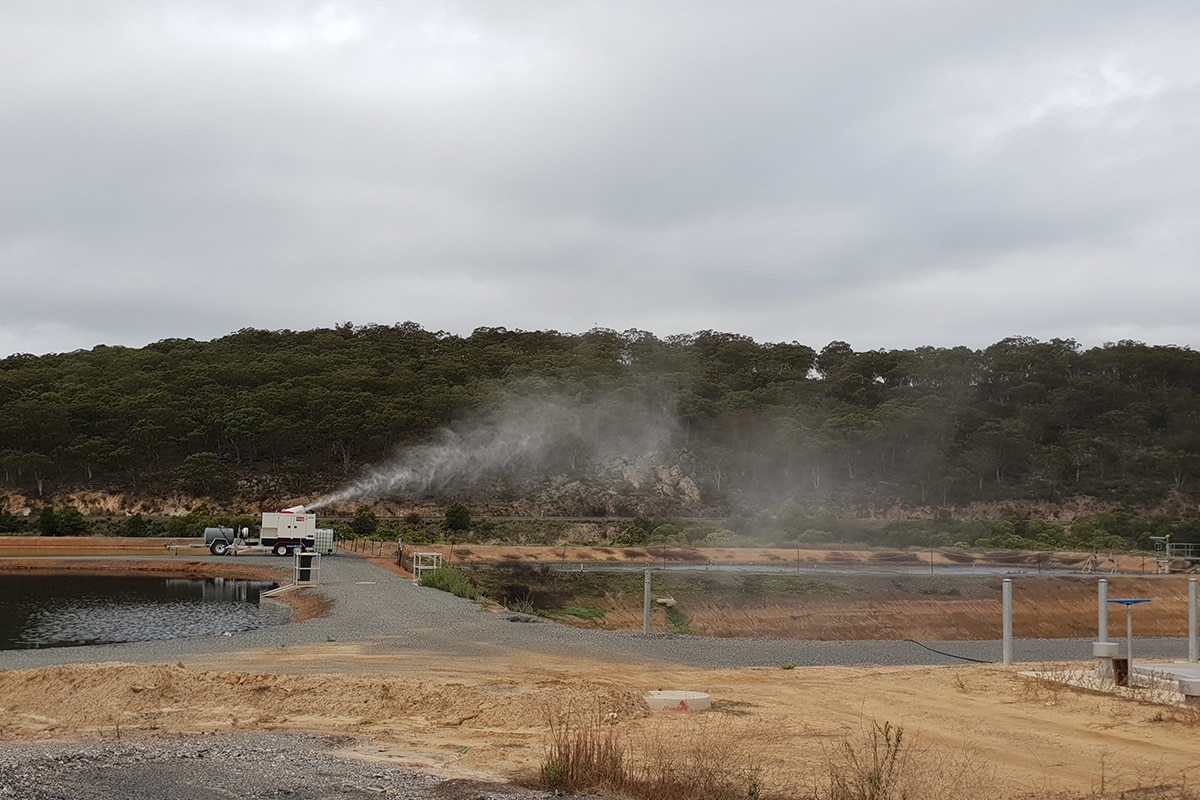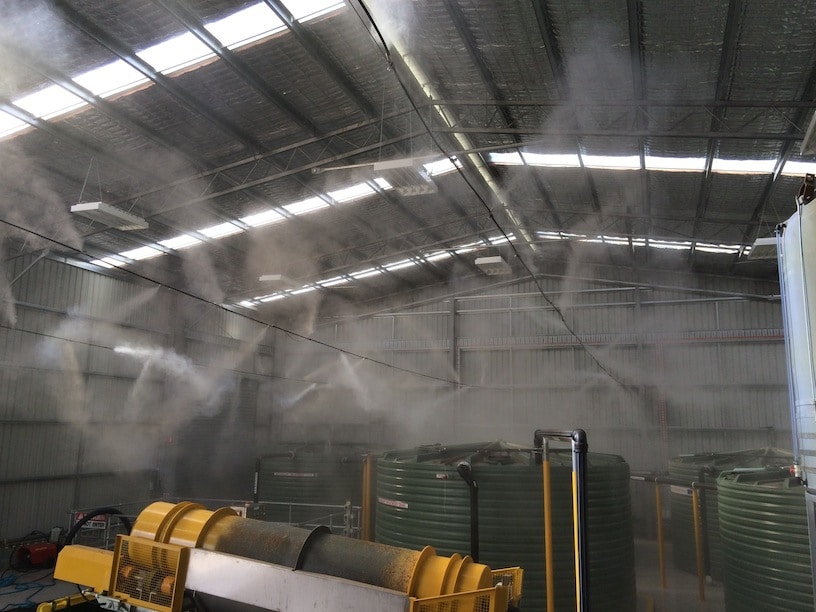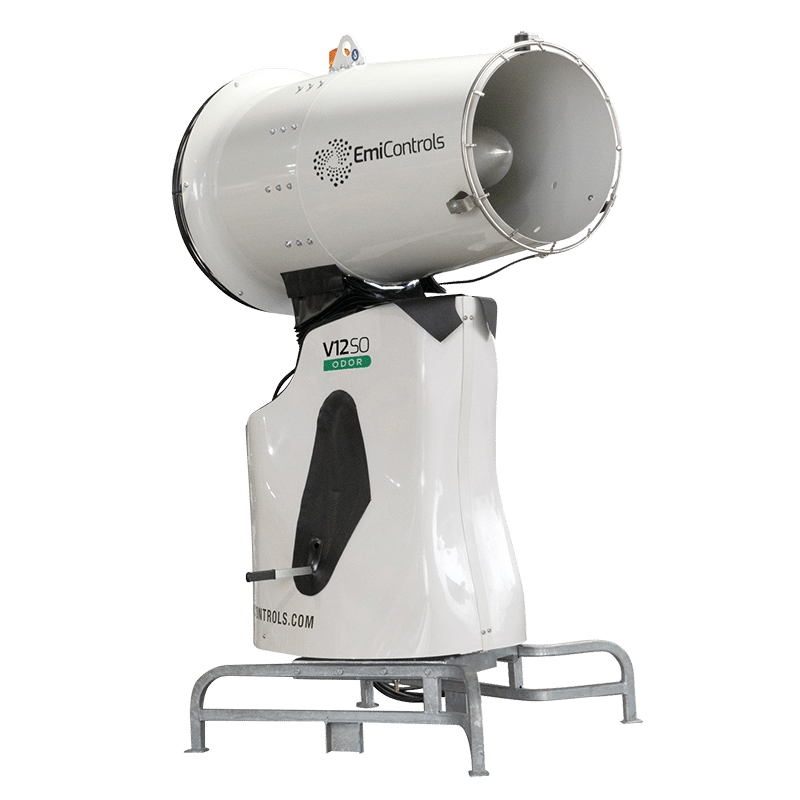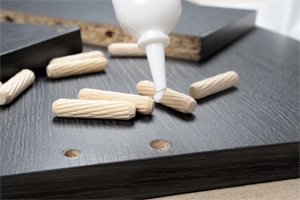Odour Control
Odour control involves the management and reduction of unpleasant or offensive smells in various environments. Controlling odours is important in residential, industrial, commercial, and municipal settings to enhance the quality of life, maintain environmental standards, and comply with regulations. The sources of odours can vary, including industrial processes, wastewater treatment, solid waste management, and more.
1. Sources of Odours:
- Industrial Processes:
- Some industries release odorous compounds as byproducts of their processes, including chemical manufacturing, food processing, and refineries.
- Wastewater Treatment:
- Sewage treatment plants can generate unpleasant odours due to the decomposition of organic matter and the release of gases such as hydrogen sulphide.
- Solid Waste Management:
- Landfills and waste treatment facilities can produce odours as organic waste decomposes.
- Agricultural Activities:
- Livestock farming, composting, and the application of fertilizers can contribute to odours in rural areas.
- Commercial Spaces:
- Restaurants, food markets, and other commercial spaces may have odours related to waste, cooking or the storage of certain products.
- Residential Areas:
- Residential areas can experience odours from various sources, including household waste, pet waste, and sewage.
2. Odour Control Methods:
- Chemical Neutralization:
- Chemical agents are used to neutralize or react with odorous compounds, rendering them less volatile or converting them into non-odorous substances.
- Adsorption:
- Adsorption materials, such as activated carbon, can be used to capture and remove odorous compounds from the air.
- Biological Treatment:
- Biological methods involve the use of microorganisms to break down organic compounds that cause odours. This is often used in wastewater treatment.
- Oxidation:
- Oxidizing agents, like ozone or hydrogen peroxide, can be employed to chemically break down odorous compounds.
- Ventilation and Air Exchange:
- Adequate ventilation helps disperse odorous air and replace it with fresh air, reducing the concentration of odours in an enclosed space.
- Covering or Encapsulation:
- Odours can be masked or encapsulated using materials that emit pleasant scents or form a barrier to prevent the release of odour molecules.
- Physical Barriers:
- Barriers such as walls or greenery can help contain odours within a specific area.
3. Technologies and Systems:
- Odor Control Towers:
- Towers equipped with packing material and a spraying system can be used to treat air and remove odorous compounds.
- Scrubbers:
- Wet scrubbers use water or other liquids to capture and remove odorous compounds from air streams.
- Biofilters:
- Biofilters use microbial activity to break down odorous compounds as air passes through a bed of organic material.
- Spraying systems and cannons:
- Chemicals for neutralising odours are atomised and distributed over the affected area via fogging nozzles or odour control cannons.
4. Regulatory Compliance:
- Emission Standards:
- Many regions have regulations that establish emission standards for odorous compounds. Industries and facilities must comply with these standards to control and minimize odours.
- Environmental Impact Assessments:
- Before starting certain projects or activities, an environmental impact assessment may be required to evaluate potential odorous emissions and implement appropriate control measures.
5. Community Engagement:
- Communication:
- Effective communication with the community is important to address concerns related to odours, especially in industrial or waste management areas.
- Odor Monitoring:
- Some facilities conduct odour monitoring to assess and address the impact of their operations on the surrounding community.
6. Preventive Measures:
- Waste Segregation:
- Proper waste segregation and management practices can help reduce the generation of odorous compounds.
- Covering and Containment:
- Covering materials, such as lids on waste containers, can help contain odours and prevent them from dispersing.
Odour control is a multidisciplinary field that involves various scientific, engineering, and management approaches. The selection of odour control methods depends on the specific characteristics of the odours, the source, and the regulatory requirements in place. Effective odour control not only improves the quality of the surrounding environment but also contributes to the overall well-being of communities and ecosystems.
Whether four odour originates from waste treatment plants, landfills and composting, abattoirs or chicken farms, odour must be correctly managed by all businesses to ensure the comfort and well-being of their staff as well as surrounding businesses and residents. Odour can be controlled by bio-filtration, dosing with chemicals and odour neutralising spray systems.
When it comes to odour control and prevention, Tecpro Australia’s technical experts will assist you in designing and commissioning the best-for-project system to neutralise unpleasant odour. One such example is the customised misting system we commissioned for the waste treatment facility at Dubbo NSW, which resulted in approval for the facility to become operational.
Odour Control Spray Systems
Tecpro Australia advises on best-practice methods, and supplies a number of different types of equipment for distributing chemical and organic odour control enzymes. These include air assisted atomising sprays, high pressure fogging systems and the odour cannon for large industrial and commercial environments. We work in conjunction with specialist odour consultants and chemical manufacturers to ensure we deliver the best and safest solution to combat any odour issue.
Natural Odour Neutralisation

When composting plants and other organic materials start to decompose anaerobically, organic sulphides and gases including carbon dioxide, sulphide gases and methane gases are released. The unpleasant odours associated with these can be controlled with the integration of enzymes which help to break down the organic material. To get results with these products you must spray the entire area and effect is not immediate but with periodic spraying over a few weeks or months the smell will stop and the decomposition will be faster and odourless.
Chemical Neutralisation
Once sprayed into the air, the chemical product wraps around the odorous gases, trapping them and turning them into non-odorous residue. The molecules of these neutralising agents instantly and permanently eliminate the odorous residue in treated air.
For specialist advice and assistance with controlling odour in your workplace using a safe and fail-proof method, contact the experts at Tecpro Australia.

